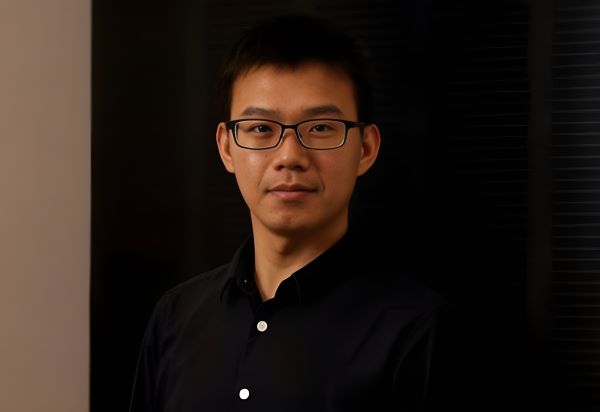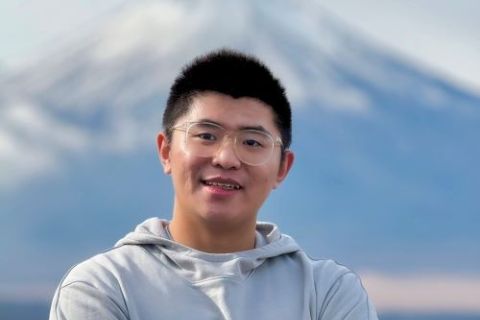
By Vince Chong
SMU Office of Research Governance & Administration – Aircraft surface inspections are a critical and mandatory component of airworthiness that uses visual and digital checks to spot minute damage, wear, or malfunction.
These are weighty issues in any jurisdiction, not least an aircraft maintenance hub such as Singapore. For SMU Assistant Professor Pang Guansong, they also carry persistent challenges that he aims to overcome with his latest cutting-edge project to improve the artificial intelligence augmenting the task.
The project, titled “Leveraging Foundation Models for Aircraft Surface Inspection in Open Environments”, tackles three main machine learning concerns: a lack of precedents of actual defects required to adequately train an AI system; a lack of a standardised or comprehensive list of defect types; and the anomaly of flaws tending to appear dissimilar under different lighting and weather conditions.
The project’s goal? Even safer flying at lower maintenance costs. As Professor Pang’s research proposal noted, the project’s “solutions will help…enhance the inspection performance in sophisticated practical application environments.”
Awarded a research grant by the Agency for Science, Technology and Research (A*STAR) under the Manufacturing, Trade, and Connectivity (MTC) domain, the project uses knowledge from current large vision-language models (LVLMs) “that are pretrained on Internet-scale data to help the system spots defects, regardless of whether we have demonstrations of the defect types.”
“The techniques will also be able to adapt to changing conditions, that is, if the inspection conditions change – like different lighting or new camera types – the system adjusts itself so it still works well without retraining everything,” Professor Pang told the Office of Research Governance & Administration (ORGA).
Generally, LVLMs are advanced AI systems programmed to understand and provide reasoning to images and text that are placed together. In other words, it allows a system to “see” and “read” at the same time.
Existing solutions in the industry are focused more on the scanning techniques, Professor Pang continued. These may perform well in detecting defects similar to previously recorded defects but not if the flaws are new to the system.
“The proposed techniques [in our project] will largely extend the capabilities to inspect defect types that are not seen in the training data and/or exhibit shifting defect appearance due to changes in nature conditions,” he said.
The research is being carried out jointly with collaborators Jamie Ng and Joey Zhou, both senior scientists at A*STAR, with mentorship from Professor Lim Ee-Peng, Director of AI & Data Science at SMU.
Three projects in one
Now well underway, the project is split into three parts, each a mini project of its own that tackles the three identified challenges of aircraft inspection in open environments. The first part seeks to enable existing LVLMs to recognise defects even when they have not been given much to go on in terms of examples and demonstrations.
The irony here, Professor Pang acknowledged, is that such LVLMs – which are trained with massive sets of images and text – are not as effective when working with a small number of “say just five to 10” defect images, without text.
As its proposal sets out, this is the first research of its kind to adapt the current recognition ability of LVLMs towards learning about defects within a smallish targeted area. This will then improve a LVLMs’ ability to, for example, distinguish false positives from actual defects, it says.
The second mini project then deals with the fact that the flaws that LVLMs are trained to recognise “illustrate only an incomplete view of all defect types". Here, the aim is to train the AI to recognise patterns in normal aircraft images and compare them to slightly altered images and actual defect images. This will enable the technology to better distinguish between normal surfaces and flawed ones, and avoid incidents where it misclassified new defects as normal.
The third phase, Professor Pang explained, aims to “utilize in-context images to instantly adapt the models to the ongoing maintenance scenes.” This is crucial as the LVLM-driven detection models from the first two phases of the project might fail when any part of the aircraft maintenance process – aircraft types, lighting conditions, etc. – varies with the environment. This third part hence seeks to deliver context to those models.
Inspired by A*STAR’s Smart Automated Aircraft Visual Inspection System programme led by project collaborator Dr. Ng, Professor Pang’s interest in the subject was also piqued by recent public research that showed rapid improvement in defect detection performance.
These factors, coupled with his expertise in anomaly detection, laid on “a strong foundation” for the project.
“In our prior research, we have established strong competencies in both utilisation of large vision models and defect detection,” said the academic, adding that he was “very confident” of hitting proposed project targets.
Advancing safety impact in a billion-dollar industry
With the global market for aircraft surface inspections projected to grow from US$4 billion in 2023 to US$8 billion by 2032, such research is expected to further benefit air safety issues on the back of better technology such as smart cameras, advanced image processors and robots.
While the project focuses on two-dimensional images, future research can build on it by introducing and integrating a variety of imagery, the academic continued. Bringing in “more modality input … into the models will help further improve the detection accuracy and extend the application scenarios,” he said.
“Industrial maintenance is of central importance to smart industry or industry 4.0,” said Professor Pang.
“We look forward to building foundation models that can support quality control in not only aircraft maintenance but also a broad range of other objects/materials/products.”
Given the right opportunity, the AI and data science expert is “very keen” to work with both government agencies and industry partners to “develop solutions for defect inspection in diverse real-world scenarios.”
For a kid who by his own admission “was not lucky enough” to play with keyboards or computers, Professor Pang has not looked back since wetting his beak in a hands-on data mining project in his second year of undergraduate study. He has since dedicated himself to his chosen discipline for over a decade.
“The driving force … is my strong interest in making learning machines that help solve challenging problems in the society,” he said.
Back to Research@SMU August 2025 Issue
See More News
Want to see more of SMU Research?
Sign up for Research@SMU e-newslettter to know more about our research and research-related events!
If you would like to remove yourself from all our mailing list, please visit https://eservices.smu.edu.sg/internet/DNC/Default.aspx

